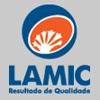Mycotoxins in Latin America
Agência Nacional de Vigilância Sanitária (ANVISA), 2011/2017. Brasil
Regulamento Técnico sobre limites máximos tolerados (LMT) para micotoxinas em alimentos. RDC n° 07, 18 de fevereiro de 2011.
RDC n° 138, 8 de fevereiro de 2017.
Código Alimentario Argentino (CAA), 2019/2021. Secretaria de
Alimentos, Bieoconomía y Desarrollo Regional Resolución Conjunta
22/ 2019, and 9/2021.
Dazuk, V., Boiago, M., Gilnea, R., Alba, D., Souza, C., Baldisserra,
M., Vedovatto, M., Mendes, R., Santurio, J. and Da Silva, A., 2021.
Vegetable biocholine as a hepatoprotectant in laying hens feed with diet contaminated with aflatoxin B1. World Mycotoxin Journal 14:
367-377. https://doi.org/10.3920/wmj2020.2592
Díaz de León-Martínez, L., López-Mendoza, C.M., Terán-Figueroa. Y.,
Flores-Ramirez, R., Díaz-Barriga, F. and Alcantara-Quintana, L.E.,
2021. Detection of aflatoxin B1 adducts in Mexican women with cervical lesions. World Mycotoxin Journal 14: 327-337. https://doi. org/10.3920/wmj2020.2602
Gerez, R.J., Gomes, A.L.P.L., Erthal, R.P., Fernandes, G.S.A., Matos,
R.L.N., Verri Jr., W.A., Gloria, E.M. and Bracarense, A.P.F.R.L., 2021.
Effect of deoxynivalenol exposure at peripuberty over testicles of rats: structural and functional alterations. World Mycotoxin Journal
14: 431-440. https://doi.org/10.3920/wmj2020.2667
Gibellato, S.I., Dalsóquio, L.F., do Nascimento, I.C.A. and Álvarez,
T.M., 2021. Current and promising strategies to prevent and reduce aflatoxin contamination in grains and food matrices.
World Mycotoxin Journal14: 293-304. https://doi.org/10.3920/ wmj2020.2559
Groopman, J.D., Smith, J.W., Rivera-Andrade, A., Álvarez, C.S., KrokerLobos, M.F., Egner, P.A., Gharzouzi, E., Dean, M., McGlynn, K.A. and Ramírez-Zea, M., 2021. Aflatoxin and the aetiology of liver cancer and its implications for Guatemala. World Mycotoxin Journal
14: 305-317. https://doi.org/10.3920/wmj2020.2641
Higashioka, K.M., Kluczkovski, A.M., Lima, E.S. and Lucas, A.C.S.,
2021. Biomonitoring AFB1 exposure of residents from the Amazon region: a pilot study. World Mycotoxin Journal 14: 319-326. https:// doi.org/10.3920/wmj2020.2627
Jiménez-Pérez, C., Alatorre-Santamaría, S., Tello-Solís, R.S., GómezRuiz, L., Rodríguez-Serrano, G., García-Garibay, M. and Cruz
Guerrero, A., 2021. Analysis of aflatoxin M1 contamination in milk and cheese produced in Mexico: a review. World Mycotoxin Journal
14: 269-285. https://doi.org/10.3920/wmj2020.2668
Mallmann, C.A., Tonial Simões, C.T., Kobs Vidal, J.K., Rosa Da Silva,
C., De Lima Schlösser, L.M. and Aráujo de Almeida, C.A., 2021.
Occurrence and concentration of mycotoxins in maize dried distillers’ grains produced in Brazil. World Mycotoxin Journal 14:
259-286. https://doi.org/10.3920/wmj2020.2669
Michelin, E.C., Bedoya-Serna C.M., Carrion, L.C.S., Godoy, S.H.S.,
Baldin, J.C., Lima, G.C., Yasui, G.S., Rottinghaus, G.E., Sousa, R.L.M. and Fernandez, A.M., 2021a. Long term exposure of Pacu (Piaractus mesopotamicus) fish to dietary aflatoxin B1 residues in tissues and performance. World Mycotoxin Journal 14: 411-419. https://doi. org/10.3920/wmj2020.2659
Michelin, E.C., Bedoya-Serna C.M., Carrion, L.C.S., Levy Pereira,
N., Cury, F.S., Pasarelli, D., Lima, C.G., Yasui, G.S., Sousa, R.M.L. and Fernandes, A.M., 2021b. Effects of dietary aflatoxin on biochemical parameters and histopathology of liver in Matrinxa (Brycon cephalus) and Pacu (Piaractus mesopotamicus) fish.
World Mycotoxin Journal14: 421-230. https://doi.org/10.3920/ wmj2020.2662
Nones, J., Solhaug, A., Riella, H.G., Eriksen, G.S. and Nones, J., 2021.
Brazilian bentonite and a new modified bentonite material, BAC302, reduce zearalenone-induced cell death. World Mycotoxin Journal
14: 347-356. https://doi.org/10.3920/wmj2019.2547
Norma Oficial Mexicana, N.-243-S.-2010, 2010. Productos y servicios.
Leche, fórmula láctea, producto lácteo combinado y derivados lácteos. Disposiciones y especificaciones sanitarias. Métodos de prueba. Diario Oficial de la Federación
Olegario da Silva, E., Pereira-Santos, J., Tadachi Money, A.,
Yamauchi, L.M. and Bracarense, A.P., 2021. Phytic acid modulates the immunological response of cytokines and β defensins in porcine intestine exposed to deoxynivalenol and fumonisin B1.
World Mycotoxin Journal 14: 357-366. https://doi.org/10.3920/ wmj2020.2648
Pinheiro, R.E.E., Rodríguez, A.M.D., Batista, E.K.F., Monte, A.M.,
Ribeiro. M.N., Calvet, R.M., Pereyra, C.M., Torres, A.M., Araripe,
M.N.B.A. and Muratori, M.C.S., 2021. Effect of Saccharomyces cerevisiae addition to feed contaminated with aflatoxin B1 on the health and performance indices of tambaqui (Colossoma macropomum) fingerlings. World Mycotoxin Journal 14: 389-400. https://doi.org/10.3920/wmj2020.2625
Pinto, L., Santos, A., Vargas E., Madureira, F., Faria, A. and Augusti,
R., 2021. Validation of an analytical method based on QuEChERS and LC-MS/MS to quantify nine mycotoxins in plant-based milk.
World Mycotoxin Journal 14: 339-346. https://doi.org/10.3920/ wmj2020.2656
Poloni, V., Magnoli, A., Fochessato, A., Poloni, L., Cristofolini, A.,
Merkis, C., Schifferli-Riquelme, C., Schifferli-Maldonado, F.,
Montenegro, M. and Cavaglieri, L.R., 2021. Probiotic gut-borne
Saccharomyces cerevisiae reduces liver toxicity caused by aflatoxins in weanling piglets. World Mycotoxin Journal 14: 379-388. https:// doi.org/10.3920/wmj2020.2629
Ponce García, N., Palacios Rojas, N., Serna-Saldivar, S.O. and GarcíaLara, S., 2021. Aflatoxin contamination in maize: occurrence and health implications in Latin America. World Mycotoxin Journal
14: 247-258. https://doi.org/10.3920/wmj2020.2666
Reglamento Sanitario de los Alimentos 2013. Máximos límites para micotoxinas en los alimentos, Ministerio de Salud, Republica de
Chile.
Sabini, M.C., Caridi, L.N., Escobar, F.M., Mañas, F., Roma, D.,
Menis Candela, F., Bagnis, G., Soria, E.A., Sabini, L.I. and
Dalcero, A.M., 2021. Preventive effects of the antioxidant and antigenotoxic Achyrocline satureioides extract against zearalenoneinduced mammal cytogenotoxicity and histological damage.
World Mycotoxin Journal 14: 401-409. https://doi.org/10.3920/ wmj2020.2571
Salazar, I., López, I., Glorio-Paulet, P. and Gomez, C., 2021. Aflatoxin
B1 contamination of feedstuff on a dairy farm in Northern Peru and aflatoxin M1 concentration in raw milk. World Mycotoxin Journal
14: 287-292. https://doi.org/10.3920/wmj2020.2672
Tonini, C., Oliveira, M.S., Parmeggiani, E.B., Sturza, D.A.F., Mallmann,
A.O., Rubin, M.I.B. and Mallmann, C.A., 2021. Serological biomarkers of zearalenone exposure in beef heifers receiving antimycotoxin additive. World Mycotoxin Journal 14: 357-365. https:// doi.org/10.3920/wmj2019.2548
Torres, A.M., Palacios, S.A., Yerkovich, N., Palazzini, J.M., Battilani,
P., Leslie, J., Logrieco, A.F. and Chulze, S.N., 2019. Fusarium head blight and mycotoxins in wheat: prevention and control strategies across the food chain. World Mycotoxin Journal 12: 333-355. https:// doi.org/10.3920/WMJ2019.2438
Torres, O., Matute, J., Gelineau-van Waes, J., Maddox, J., Gregory,
S.G., Ashley-Koch, A.E., Showker, J.L., Voss, K.A. and Riley, R.T.,
2015. Human health implications from co-exposure to aflatoxins and fumonisins in maize-based foods in Latin America: Guatemala as a case study. World Mycotoxin Journal 8: 143-159. https://doi. org/10.3920/WMJ2014.1736










